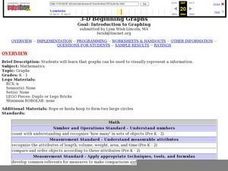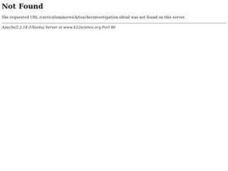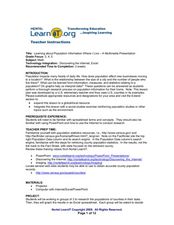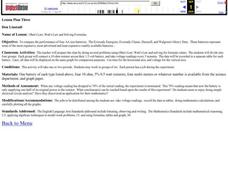Curated OER
Which Is My Peanut?
Students observe peanuts. In this observation lesson plan, students get a peanut and write down the distinguishable characteristics. They weigh and measure their peanut, then try to identify it when it is put in a group with the rest of...
Curated OER
The Lawnmower Problem
In this algebra worksheet, students solve a word problem by rewriting it using math symbols. They calculate how fast the woman can mow the lawn given different scenarios. There is an answer key.
Curated OER
Chart Reading - Uninsured in the United States of America
In this chart reading worksheet, students click on the links to read different charts about health insurance in the United States and then answer short answer questions about it. Students complete 7 questions total.
Curated OER
Exploring Ecosystems
Fourth graders investigate ecosystems. In this ecosystem lesson, 4th graders explore producers, consumers, and decomposers and study the interdependence of each.
Curated OER
How Much Is There To Eat?
Tenth graders compare the relationship of food production and population in India with the southern regions of the United States.
Curated OER
3-D Beginning Graphs
Students explore the concept of big and small. They collect objects from the classroom, sort them by size, and create a graph using Duplo stacking blocks.
Curated OER
Create Your Own Investigation
Students design and implement an experiment intended to measure and analyze the air quality of a particular location. They focus on looking for ozone and particulate pollutants.
Curated OER
Learning and Population Information - Where I Live
Students study their county populations in a multimedia presentation format. In this populations instructional activity, students work in groups of 3 to research the county populations in their state. Students chart their results in an...
Curated OER
Pollution Prevention At Ft. Riley
Student examine methods of pollution reduction used at Ft. Riley military institution. Students review the economic impact of the use of enviromentally sensitive materials.
Curated OER
What Do You Think About Radon?
Students complete a survey about radon in their homes. They calculate the averages for each question. They graph the averages and discuss the results.
Curated OER
Geography: Snow Cover on the Continents
Students create maps of snow cover for each continent by conducting Internet research. After estimating the percentage of continental snow cover, they present their findings in letters, brochures or Powerpoint presentations.
Curated OER
Work in Post-World War II Wisconsin
Students explore the changing nature of work in postwar America by analyzing a variety of sources and conducting their own research. They answer the question, "How did work change in Wisconsin after World War II?"
Curated OER
Using Soil properties and Vegetation Differences to Hypothesize the Land Use History and Topographic Differences between Two Locations
Ninth graders take soil samples and perform tests on these samples.
Curated OER
Ohm's Law, Watt's Law and Solving Formulas.
Students, in groups, connect a 10 ohm resistor across their 1.5 volt battery, and take voltage readings every 5 minutes.
Curated OER
Seeds and Similarities
Students use the scientific inquiry method to identify the changes in a plant's life cycle. In groups, they plant different types of plants and use a chart to compare and contrast their growth rates. They share their conclusions with...
Curated OER
Math and Cinderella
Students trace their feet and them compare the different sizes of classmates. They construct a bar graph showing the results of their classmates' feet size. They discuss what kinds of conclusions can be drawn from their observations.
Curated OER
Examine an Ecosystem
Students examine an ecosystem and record what they see. In this ecosystem lesson students use a worksheet to help them identify the organisms in their ecosystem.
Curated OER
Making Community Measurements: Which Plant Part?
Students identify a plant in a given community and make a variety of measurements. They determine how a plant meets its basic needs. In addition to identifying plant parts, they observe seasonal change and compare plants within a community.
Curated OER
Lewis and Clark in Washington Shrub Steppe Habitat
Students reserach the flora and fauna next to their school for two days and also Lewis and Clark's journals. They compare Lewis and Clark's description of the area to the one they have today. They also discuss the idea of restoring...
Curated OER
Roaming Biomes
Students use the Internet to research the capabilities of earth-observation satellites. Using the information, they write a report on how remote-sensing technology is used to measure the impact of climate change. They identify the...
Curated OER
Conservation Success Index
Students read information about trout habitat preservation and visit the various links to learn a fish species and its current habitat range. In this habitat conservation lesson, students read passages about use the Trout Unlimited...
Curated OER
Altitude and Flight Forces
Learners use the World Wide Web to access and use FoilSim. They also use the World Wide Web to access the NASA Glenn Web site for information relative to the factors involved with the flight of an airplane.
Curated OER
Democracy Then and Now
Students research more about the Canadian parliamentary democratic system.
Curated OER
Numbers Up
Students use Legos to build representations of a variety of numbers. They then sort and order their representations and pair them with the written number.

























